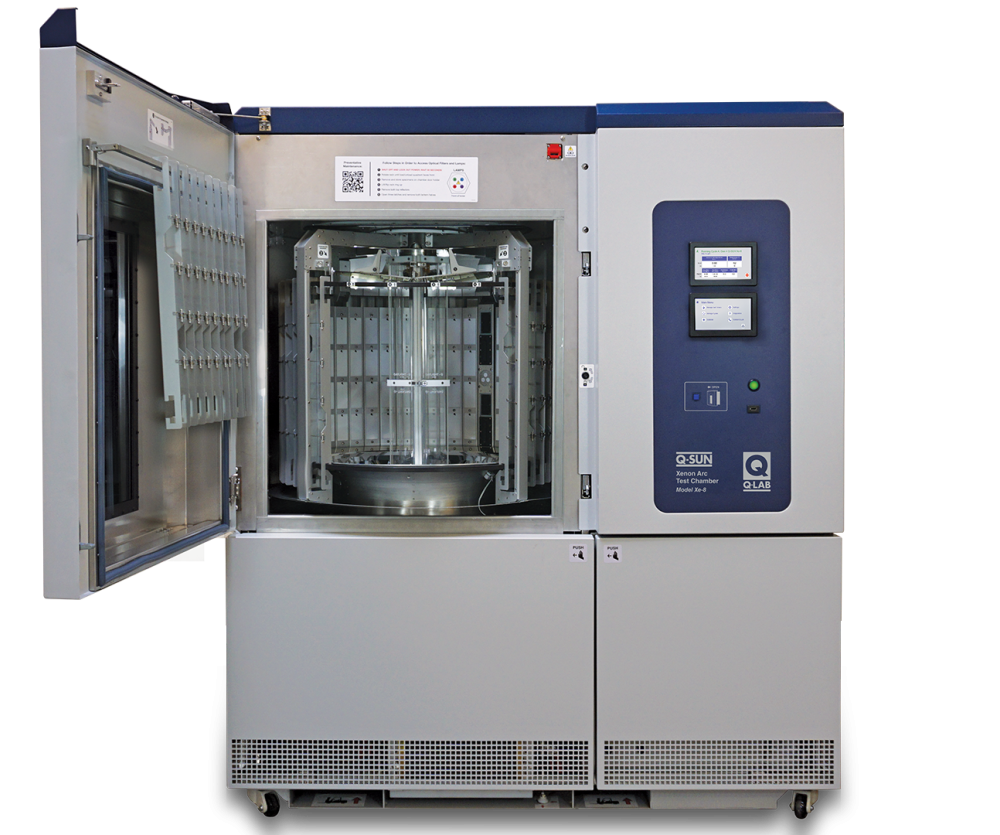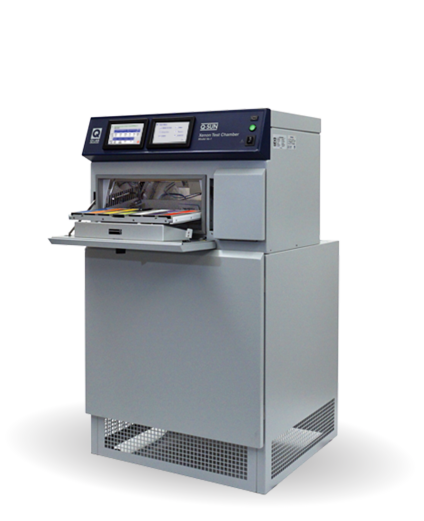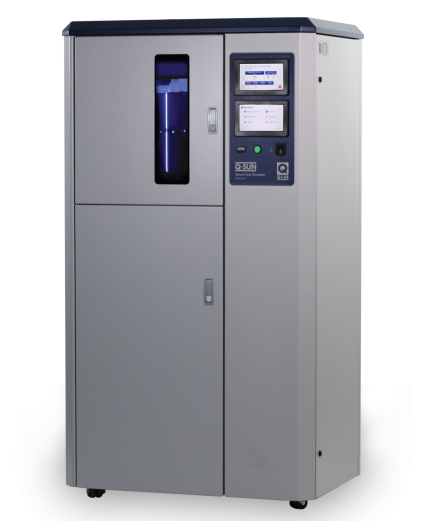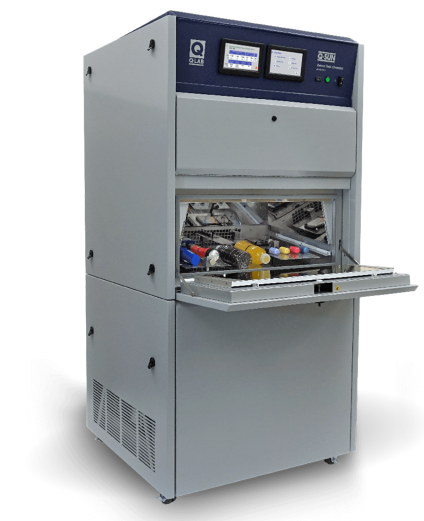
Featured Product
Q-SUN® Xe-8
XENON ARC CHAMBER | LARGE CAPACITY ROTATING RACK
The Q-SUN Xe-8 is the NEW standard in large capacity, rotating rack xenon arc weathering testers. It is the simplest, most reliable, and easiest-to-use tester available in its class.
The versatile Q-SUN Xe-8 tester offers relative humidity control, front and back spray, dual insulated and uninsulated black panel temperature control, and an irradiance sensor array featuring 340 nm, 420 nm, and TUV control – all standard. For additional information, view the Q-SUN Xe-8 Product Brochure.


